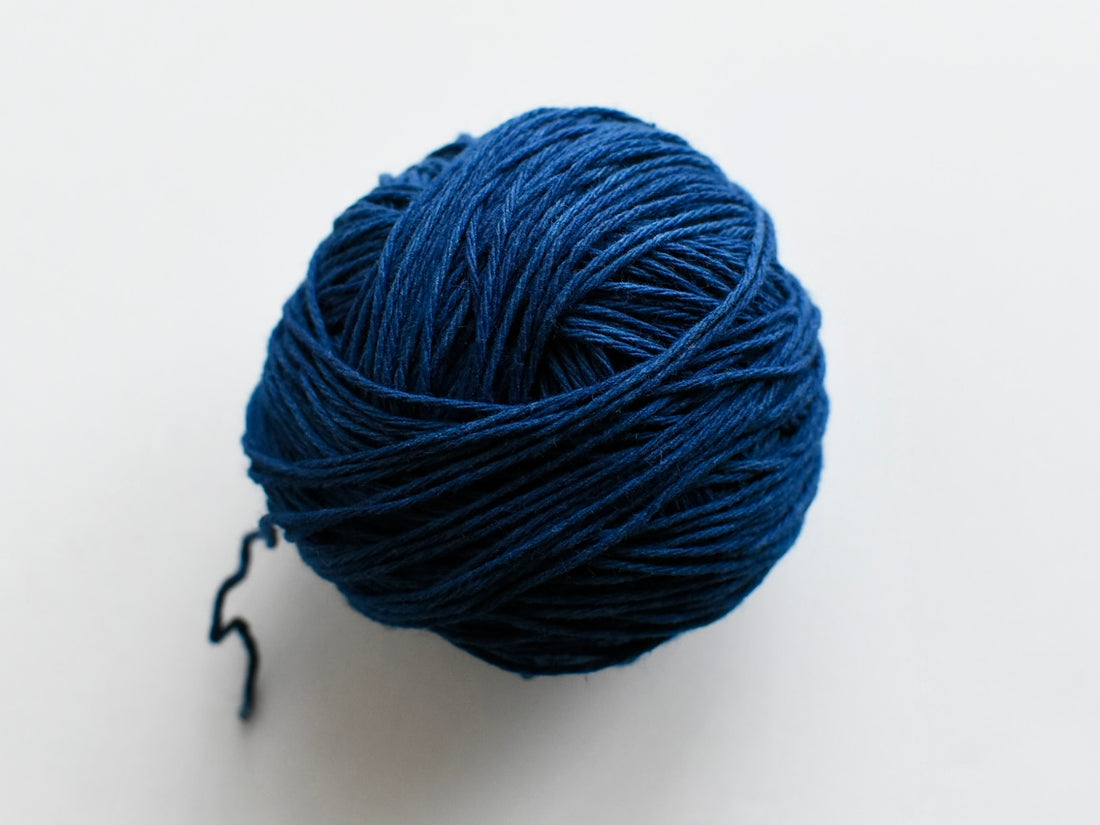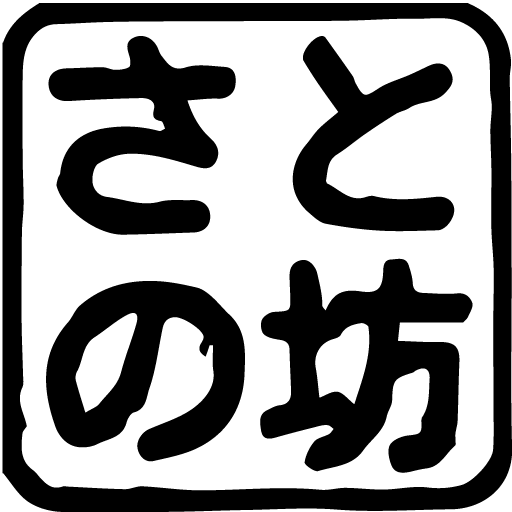
How to store kogin thread
◆How to store kogin thread
I still can't find the materials I thought I brought in my hand luggage, so I thought I'd write a light story for a while.
Today we will talk about how to store kogin thread. Ladies and gentlemen, how do you store your kogin thread? I think most people store their embroidery thread in one of the following ways: 1) Form it into a ball , 2) Wrap it around a card , or 3 ) Wrap it around an embroidery thread holder .

(Top is handmade fan hand-dyed kogin thread, bottom is Tsuki Yakogin thread)
First, I store it by wrapping it around a DMC embroidery thread holder (Stitch Bow) and writing the manufacturer and color name on the wide part . The condition is as shown in the photo above. DMC embroidery thread is easy because you just need to hang it, but kogin thread requires more effort as you need to wrap it around the appropriate amount. However, portability is an advantage for people who spend a lot of time on the move , such as when traveling or returning home. I also like that when choosing thread colors , I line them up on the fabric to make it easier to choose colors . Approximately 20 meters of kogin thread can be wrapped around it , so just one bundle of Tsukiya kogin thread or Olympus kogin thread will fit. In the case of handiwork fans' kogin thread (often sold in units of about 40 meters), I wrap half of it, then twist the remaining thread to its original state and store it in a zipper bag.
The thread names are written with an oil-based pen, so if you want to change the color name, you will need to erase it with nail polish remover and rewrite it, but if you do not give it some time, it may be difficult to get the color on the pen. Please be careful.

(Handwork fan hand-dyed kogin thread)
In the past, I used to store loose threads in a jar, but now I'm full of threads in multiple colors from multiple manufacturers and I don't want to waste time looking for threads, so I changed to this method. Also, at first we were cutting cardboard, but with this constricted thread-wound card, there is no need to worry about the thread coming out even if there is an accident , and there is no need to cut cardboard to the same size, so online shops etc. I purchased and am using it. Also, DARUMA's kogin thread is wrapped around a card, so you can reuse it after use.
If you enjoy yarn from multiple manufacturers or enjoy a wide variety of colors, you'll likely end up with a lot of leftover yarn, so you'll want to find ways to use it until the end.

(koginbank natural indigo-dyed kogin thread)
Lastly, some people may want to roll it into a ball . It is eco-friendly as it does not require any special materials to wind the thread. It is also suitable for those who enjoy using a single color or for storing a large amount of yarn. I use this method when I have purchased a large skein of yarn, or when I have a little extra yarn that cannot be purchased in a limited edition color. Also, it's nice that it's just round and cute.
◆How to unwind and wind the thread from the sold state When winding the thread from the sold state to any state, I sit in a triangular position (gyo sitting?) on a chair and wrap the thread with both knees. I support the ring and slowly unwind the thread as I wrap it around it. The size of the thread loop varies depending on the manufacturer, but if it's your own body, you can freely change the distance between your knees, so it's easy.
This is also my favorite time to check the softness, luster, tension, and feel of the yarn during preparation of the yarn. If you are not well-mannered and find it difficult to stay in that position, you may want to borrow two of someone else's arms or use the back of a chair.

(Starts from a twisted state to a ring)
◆What to do if the thread gets tangled If you wind the thread carefully and without haste, it is unlikely that the thread will get tangled. However, sometimes while winding a thread, a chime rings or a family member calls you, making it difficult to wind the thread calmly. ``Wait a minute!'' The threads start to get tangled at the same time, and when I don't have the time to do so, I force myself to pull them and get tangled .
In such a case, we recommend that you take a deep breath and slowly untangle the thread, or if nothing seems to work, take the plunge and cut it. At this time, I tried my best to unravel it until it was long enough to make Koginzashi, You can use it for kogin embroidery by wrapping it around thread-wound card or cardboard. When you are under pressure, it may be important to avoid winding the thread as much as possible.
The photo below shows a kogin thread that got tangled out of impatience and continued to get tangled as I tried to force it. (Friction can also damage the thread.) At this point, I gave up on winding it around the Stitch Bow, and when it unraveled to a suitable length, I cut it and wrapped it around the card. In the end, it all came together beautifully.

▶️Shop (scheduled to be open for a limited time when you return to Japan temporarily next year)
